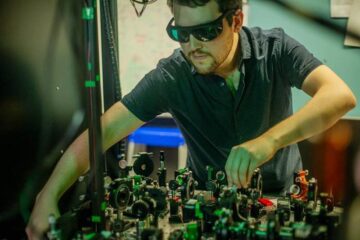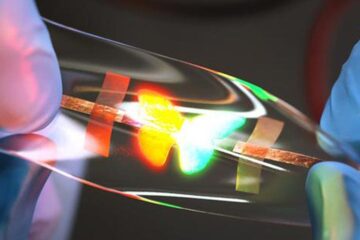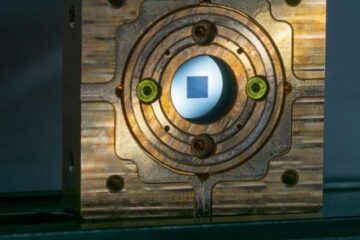Century old rule of Chemistry overturned – major implications for drug delivery

Overton’s rule says that the easier it is for a chemical to dissolve in a lipid (fat) the easier and faster it will be transported into a cell. The Rule was first outlined in the 1890s by Ernst Overton of the University of Zürich. He declared that substances that dissolve in lipids pass more easily into a cell than those that dissolve in water.
He then set forth an equation that predicted how fast that diffusion would happen. One of the key parameters in that equation is K which defines the lipophilicity (oil-liking nature) of the chemical. The higher the value of K, the faster the predicted cell permeation rate. For over a century, medicinal chemists have used this relationship to shape their studies and clinical trials.
A team of electrochemists from the University of Warwick used a combination of a confocal microscope and an ultramicroelectrode to study what really happens when a chemical crosses a cell membrane. Advances in technology enabled them to position an ultramicroelectrode incrediblely close to the membrane boundary (roughly 20 microns away; ca. 1/3rd the thickness of a human hair) where it was used to generate a range of acids that should be able to diffuse relatively easily into a cell. These techniques allowed every step of the diffusion process to be directly examined. Previous studies had not been able to observe every step of the process and often required artificial stirring of the solutions.
The results stunned the researchers. While the acids did diffuse across a lipid membrane, they did so at rates that were diametrically opposite to the predictions of the Rule, i.e. the most lipophilic molecules were actually transported slowest. The researchers studied four acids (acetic, butanoic, valeric, and hexanoic) that had increasingly larger “acyl” (or carbon) chains. The longer the carbon chain, the easier the chemical dissolves in lipids and, therefore, according to Overton, the faster they should diffuse across a lipid membrane. In fact, the University of Warwick researchers observed that for these four acids the exact opposite is true: the easier it is for an acid to dissolve in a lipid, the slower it is transported across the membrane.
The research team will now use their technique to examine the diffusion into cells of a range of other chemicals. The lead researcher on the study from the University of Warwick, Professor Patrick Unwin, said:
“This was a surprising and exciting finding. Our direct observations appear to totally undermine a key rule that has withstood the test of time for over a century. We will now make observations with a range of other chemicals, and with other techniques, to further elucidate the molecular basis for our observations. Text books will have to be rewritten to revise a rule that has been relied on for over a century. Advanced techniques, such as the one we have developed, should give much clearer insight into the action of a wide range of drug molecules, which will be of significant interest to drug developers.”
Media Contact
More Information:
http://www.warwick.ac.ukAll latest news from the category: Life Sciences and Chemistry
Articles and reports from the Life Sciences and chemistry area deal with applied and basic research into modern biology, chemistry and human medicine.
Valuable information can be found on a range of life sciences fields including bacteriology, biochemistry, bionics, bioinformatics, biophysics, biotechnology, genetics, geobotany, human biology, marine biology, microbiology, molecular biology, cellular biology, zoology, bioinorganic chemistry, microchemistry and environmental chemistry.
Newest articles

Combatting disruptive ‘noise’ in quantum communication
In a significant milestone for quantum communication technology, an experiment has demonstrated how networks can be leveraged to combat disruptive ‘noise’ in quantum communications. The international effort led by researchers…

Stretchable quantum dot display
Intrinsically stretchable quantum dot-based light-emitting diodes achieved record-breaking performance. A team of South Korean scientists led by Professor KIM Dae-Hyeong of the Center for Nanoparticle Research within the Institute for…

Internet can achieve quantum speed with light saved as sound
Researchers at the University of Copenhagen’s Niels Bohr Institute have developed a new way to create quantum memory: A small drum can store data sent with light in its sonic…





















